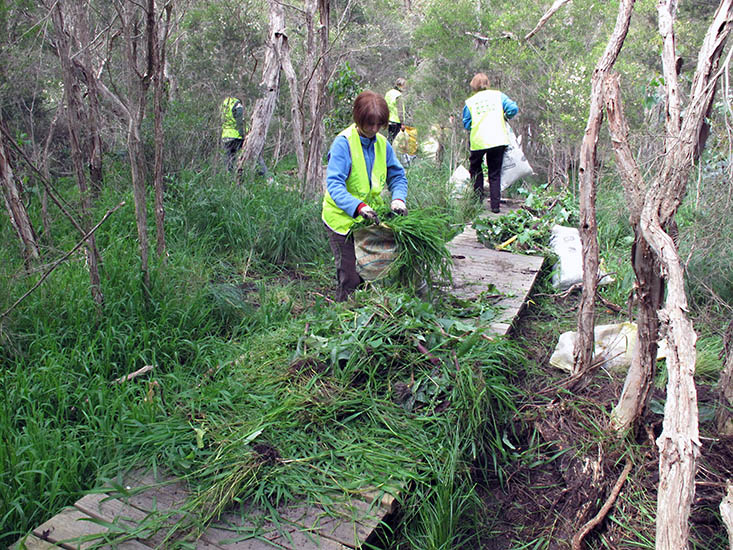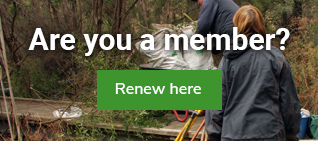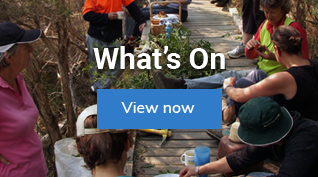BERG Mt Martha’s aim is to encourage the wide variety of indigenous plants that previously existed in the Balcombe Creek, Estuary and Reserves to regenerate and flourish, providing a natural environment for the community to enjoy and as a reminder of what this landscape used to be like..
Our volunteers and contractors, helped occasionally by external groups such as school children, company volunteers, Rotary and the Green Army, remove non-indigenous plants and rubbish from the Balcombe Estuary Reserves, principally Boneseed, Polygala, Pittosporum, Angled Onion, Ivy, Winter Cherry, Tradescantia and Rock Rose.

We get our contractors to spray weed grasses and other tenacious and scrambling weeds, such as Smilax, Blackberry and Bridal Creeper, wherever large weed masses exist.
Once weeds are removed, we plant a diversity of indigenous plants raised from local seed to complement the structure of the relevant EVC (Ecological Vegetation Class), ranging from lower storey grasses, sedges and shrubs to upper storey small and large tree species.
Before summer, we spread truckloads of mulch to preserve water in the ground for new plants and reduce weed reinfestation. Working bees revisit new plantings periodically to remove new weeds, or provide other support (such as guards) as plants grow.
Our work has now extended beyond the Estuary Reserves to include the Mt Martha foreshore, from the north to the south car park. Our aim is to improve the diversity of the foreshore vegetation, and restore the threatened Coast Banksia Woodland, which is a vital part of the local ecology.
We also have a series of nesting boxes throughout the reserves to provide habitat for a variety of indigenous ‘hollow-dependant’ fauna such as sugar gliders, microbats, antechinus, possums and a variety of birds eg parrots and Kookaburras.





